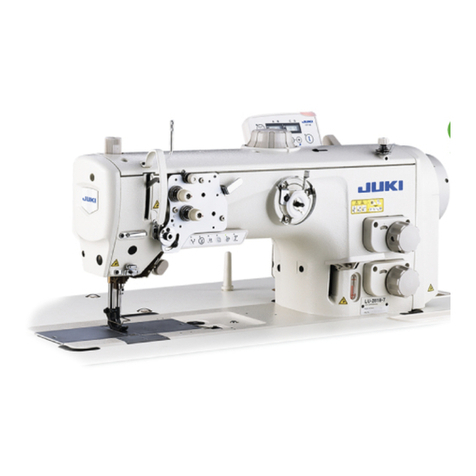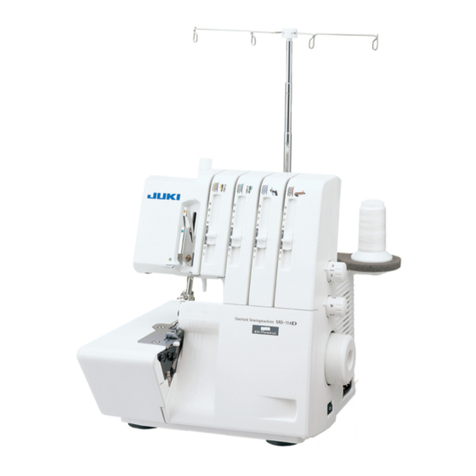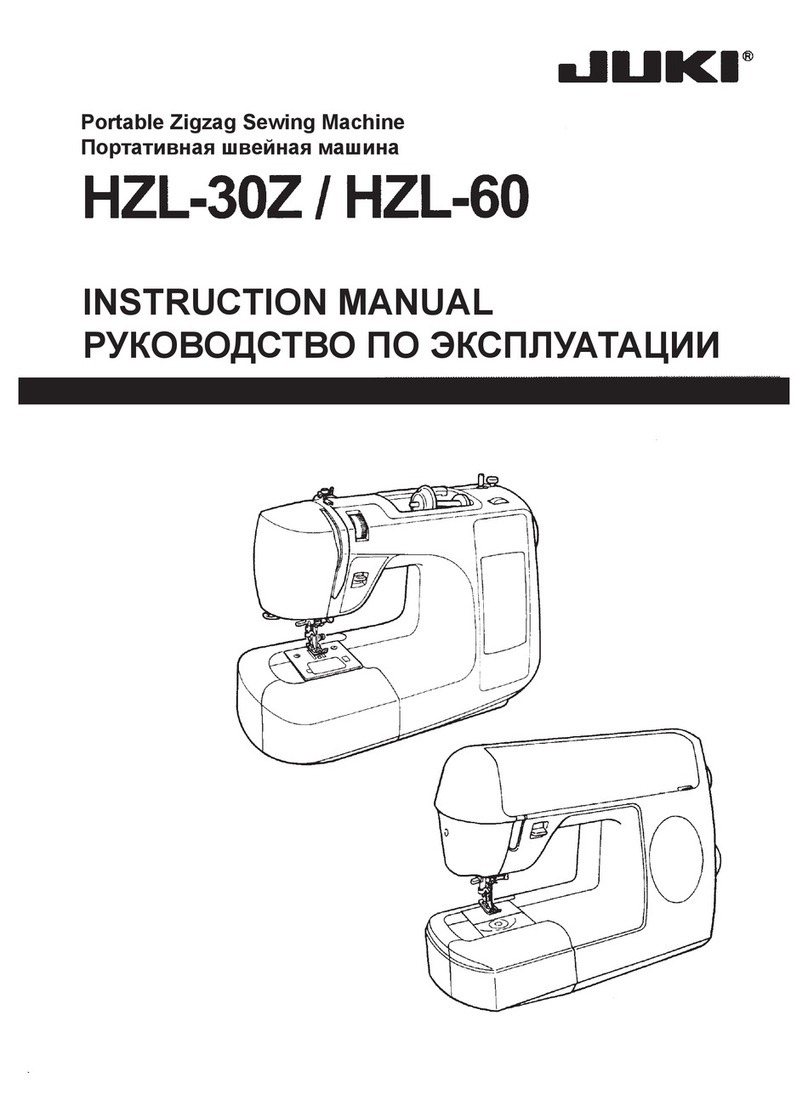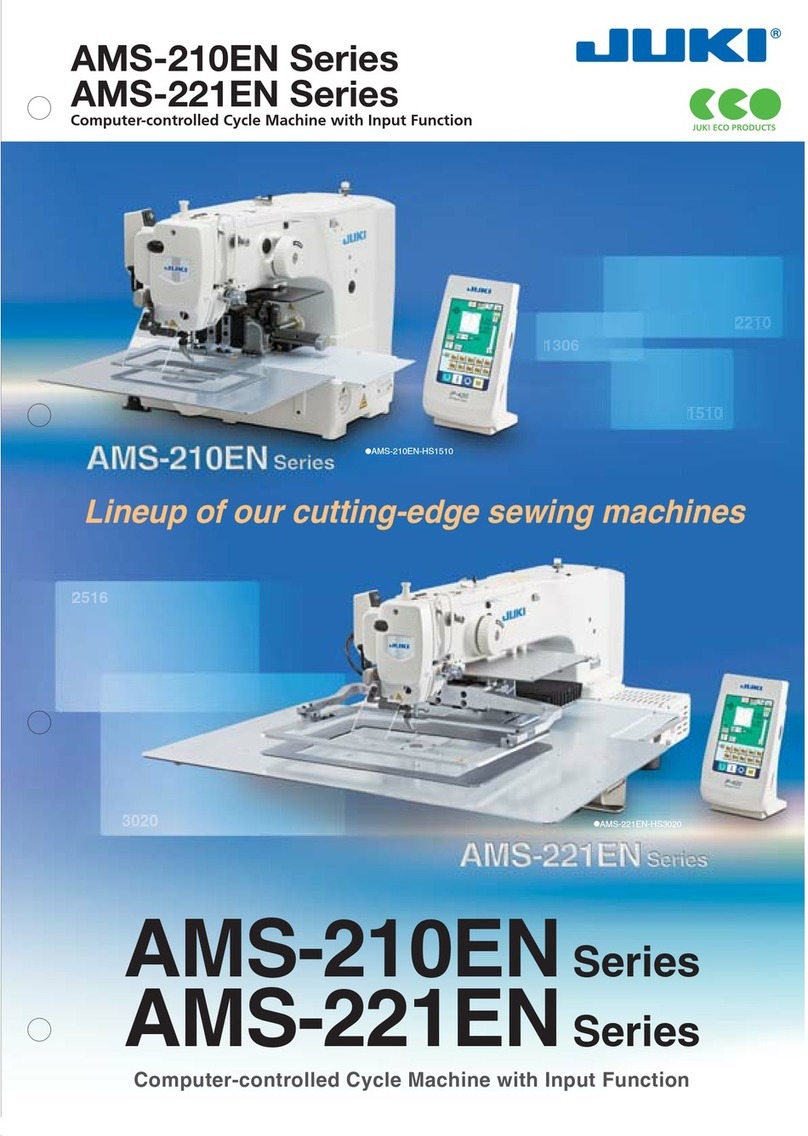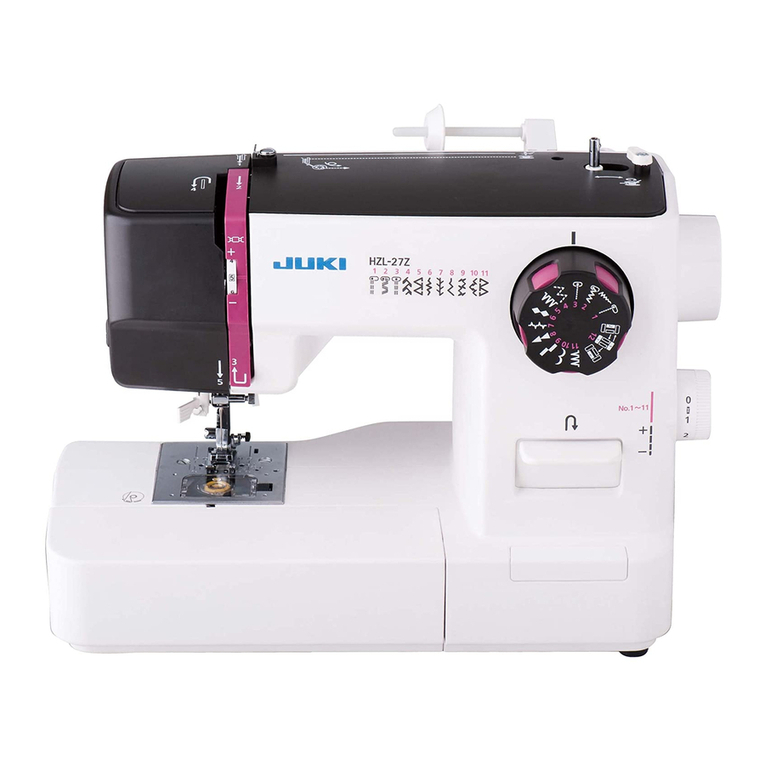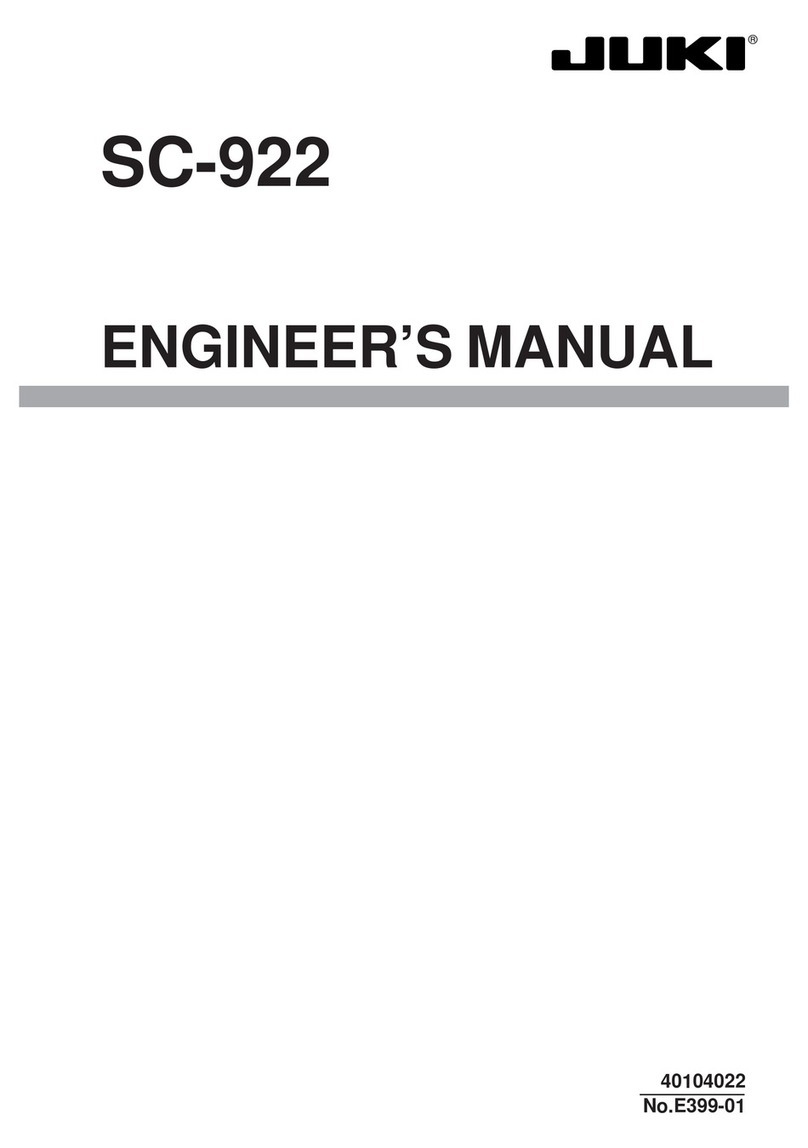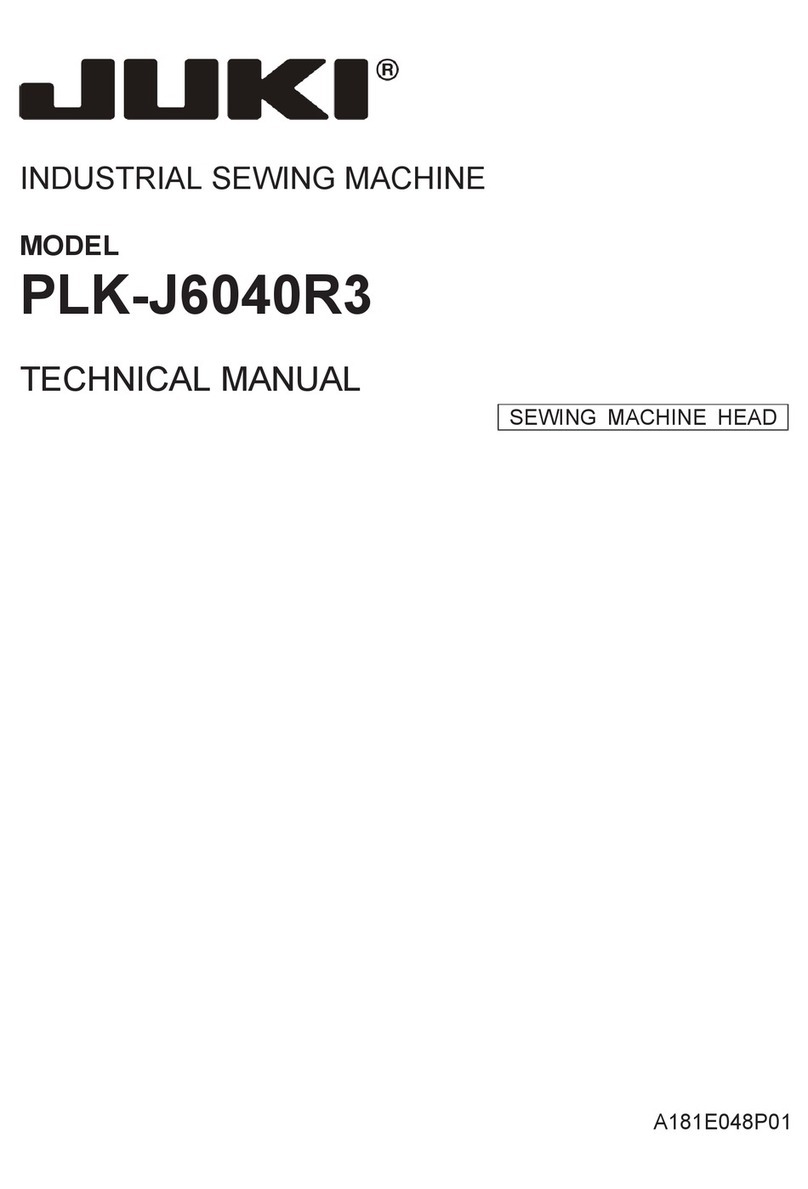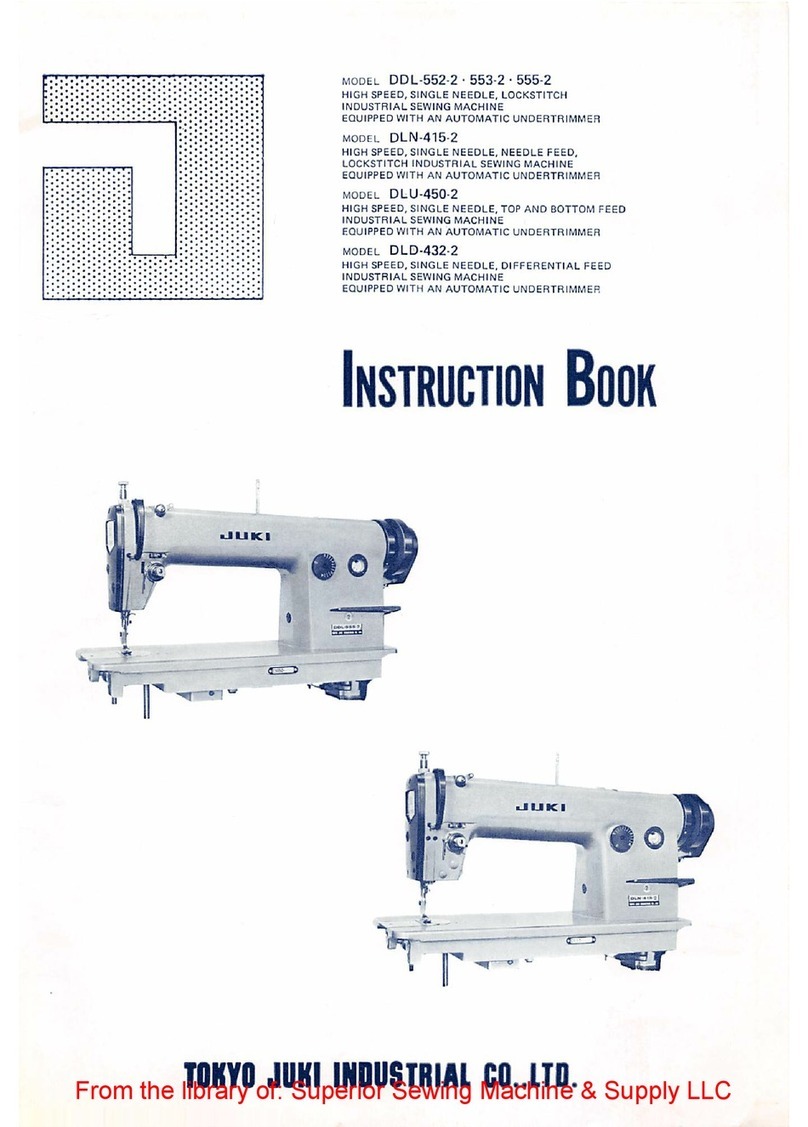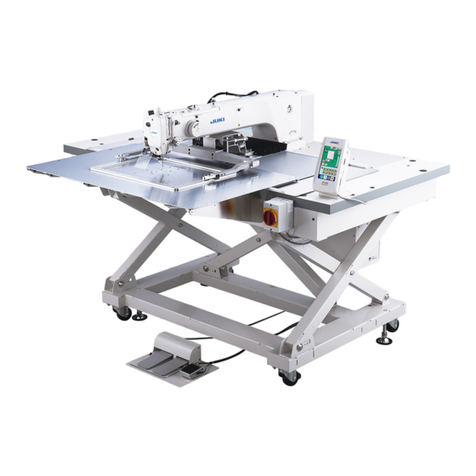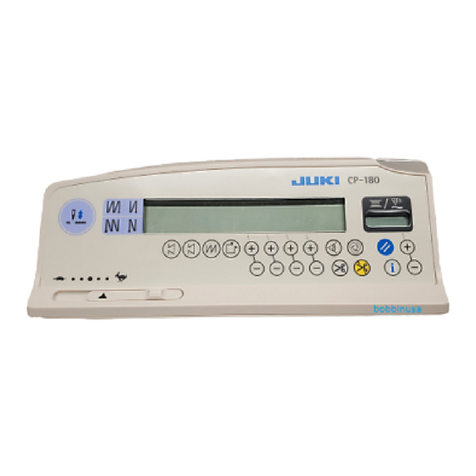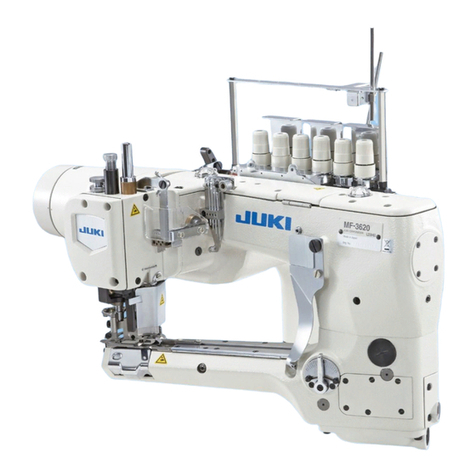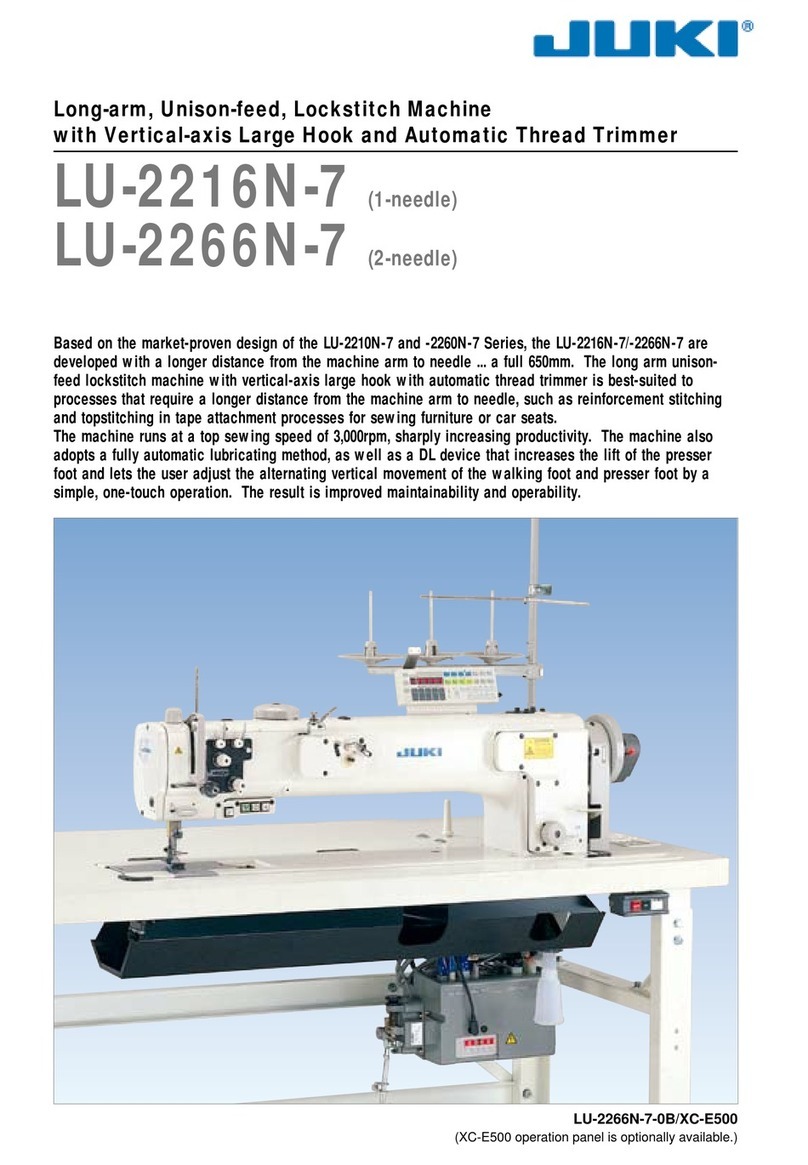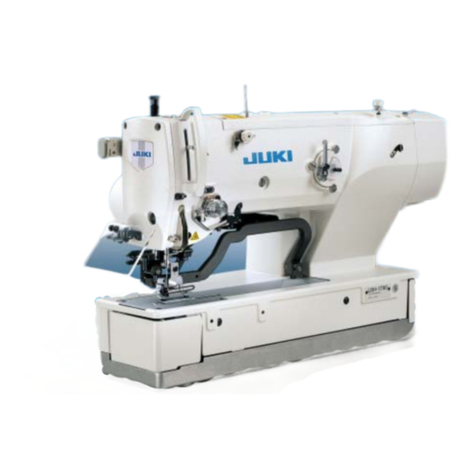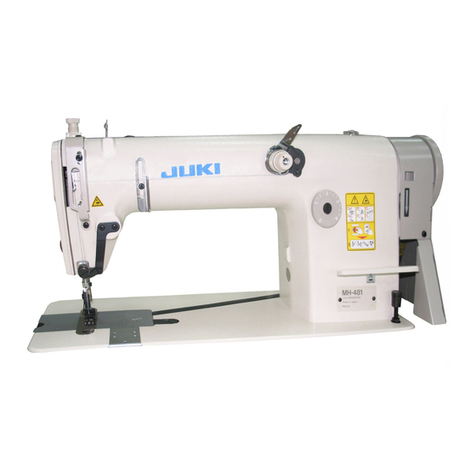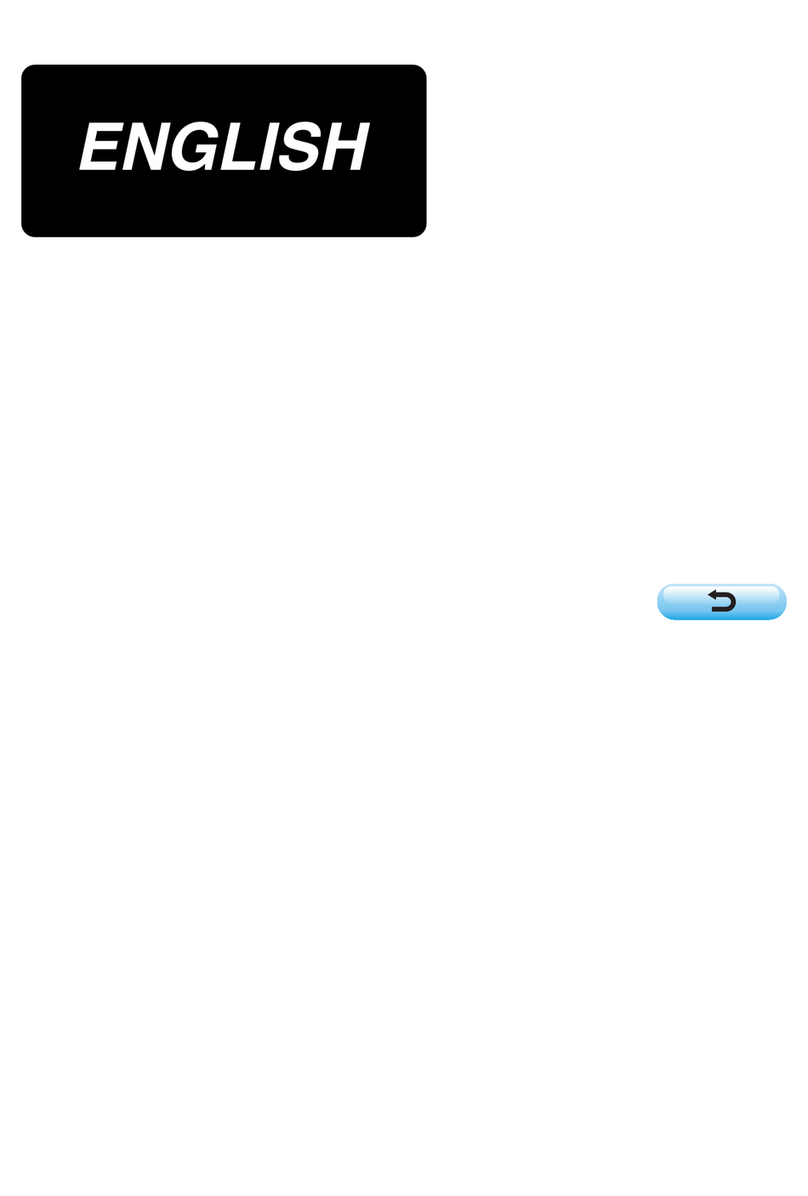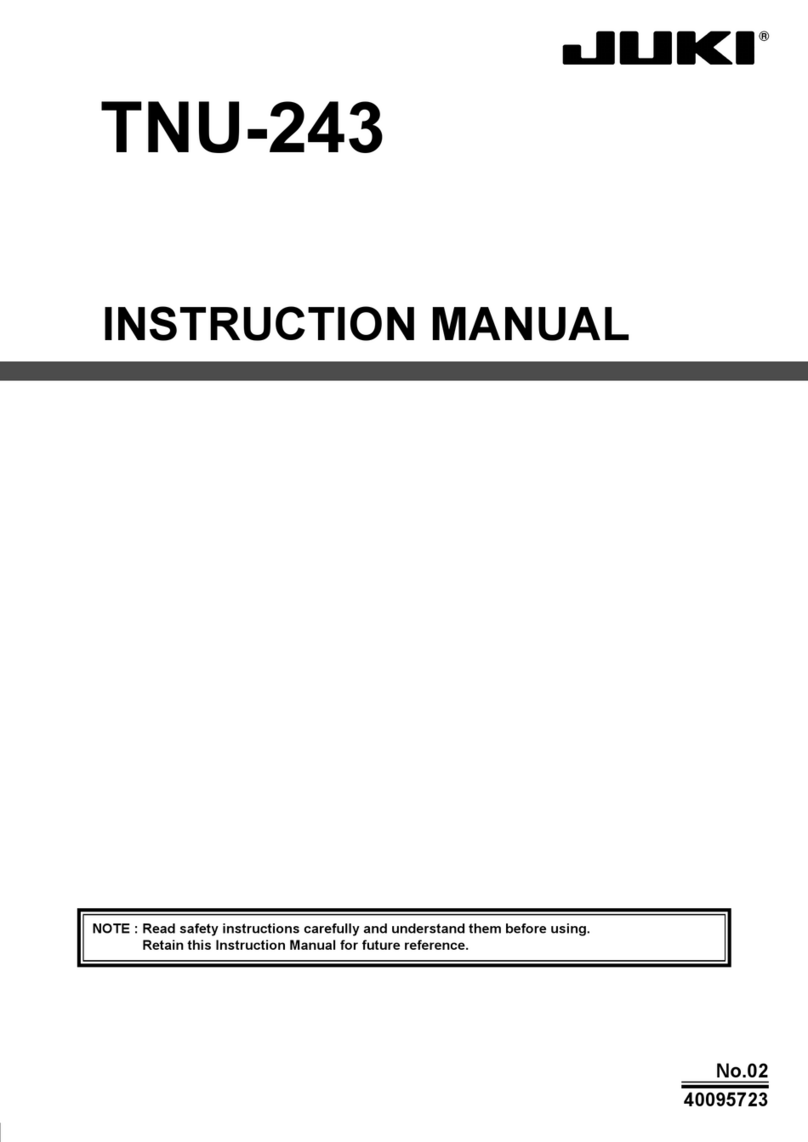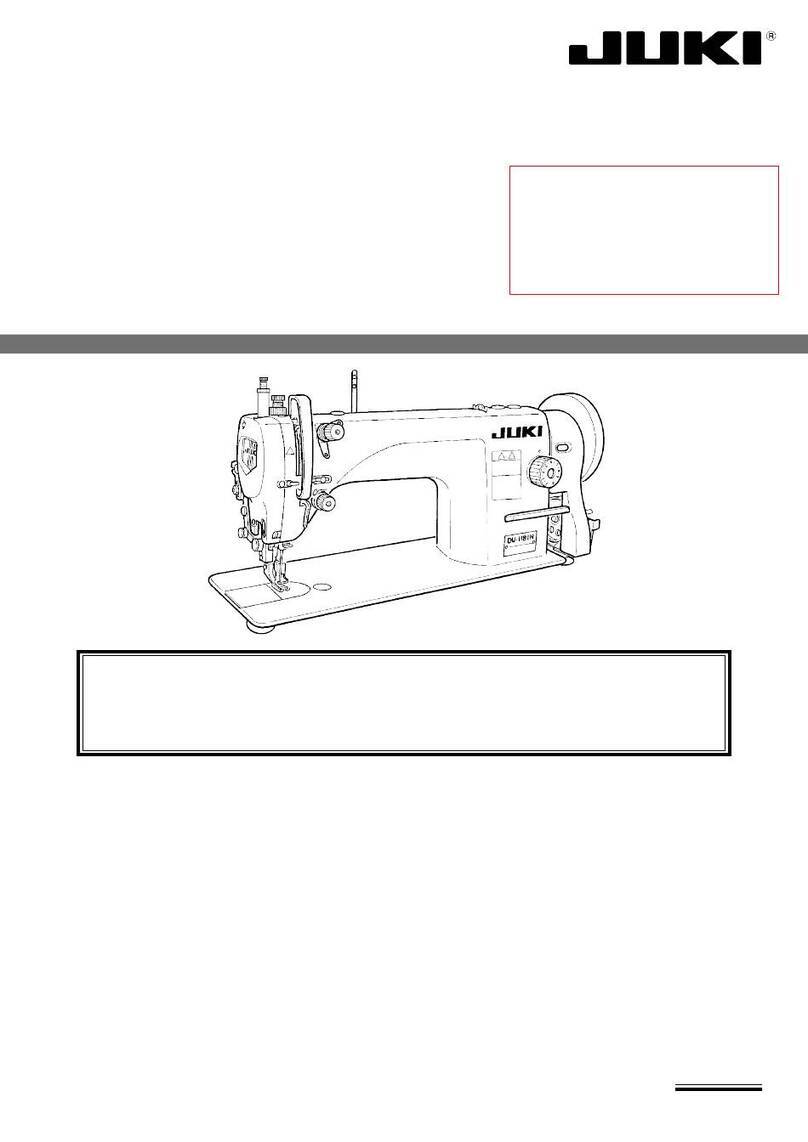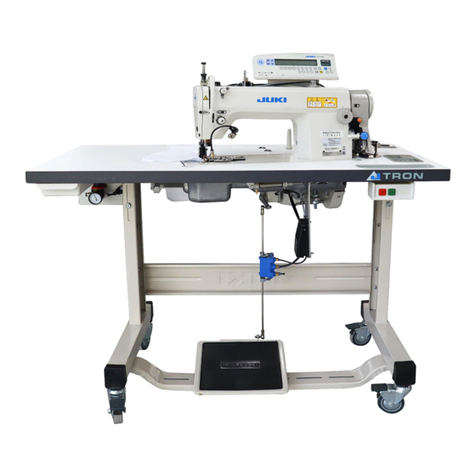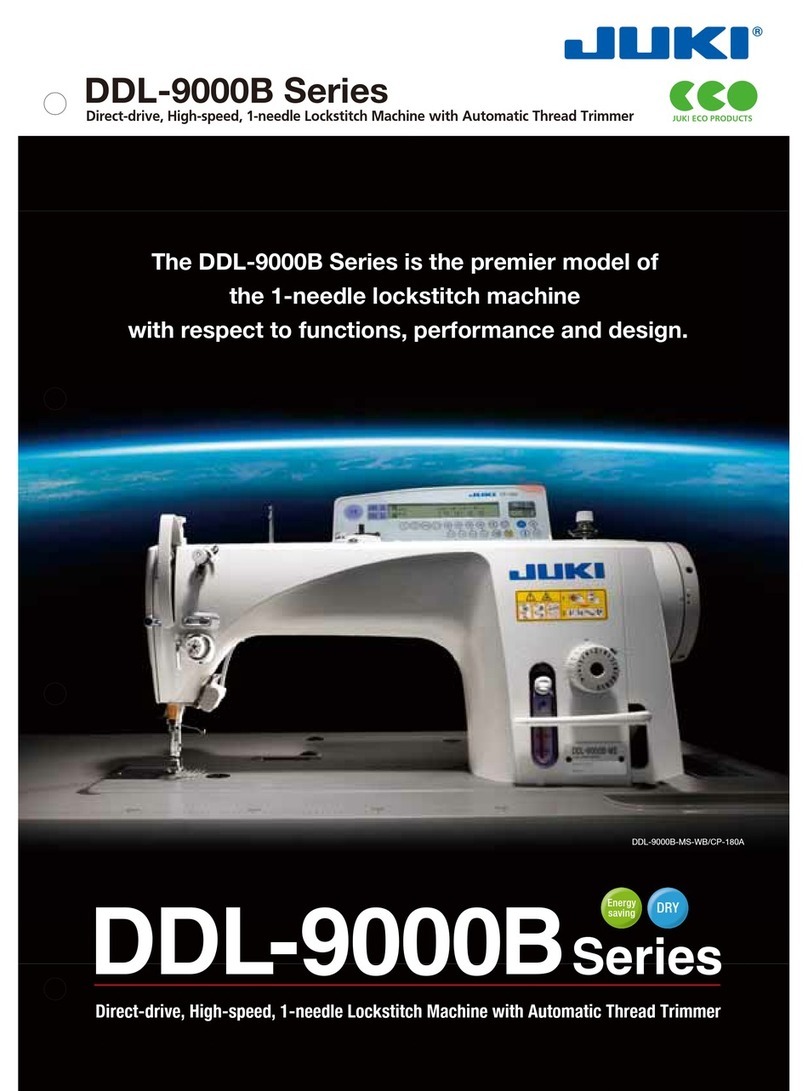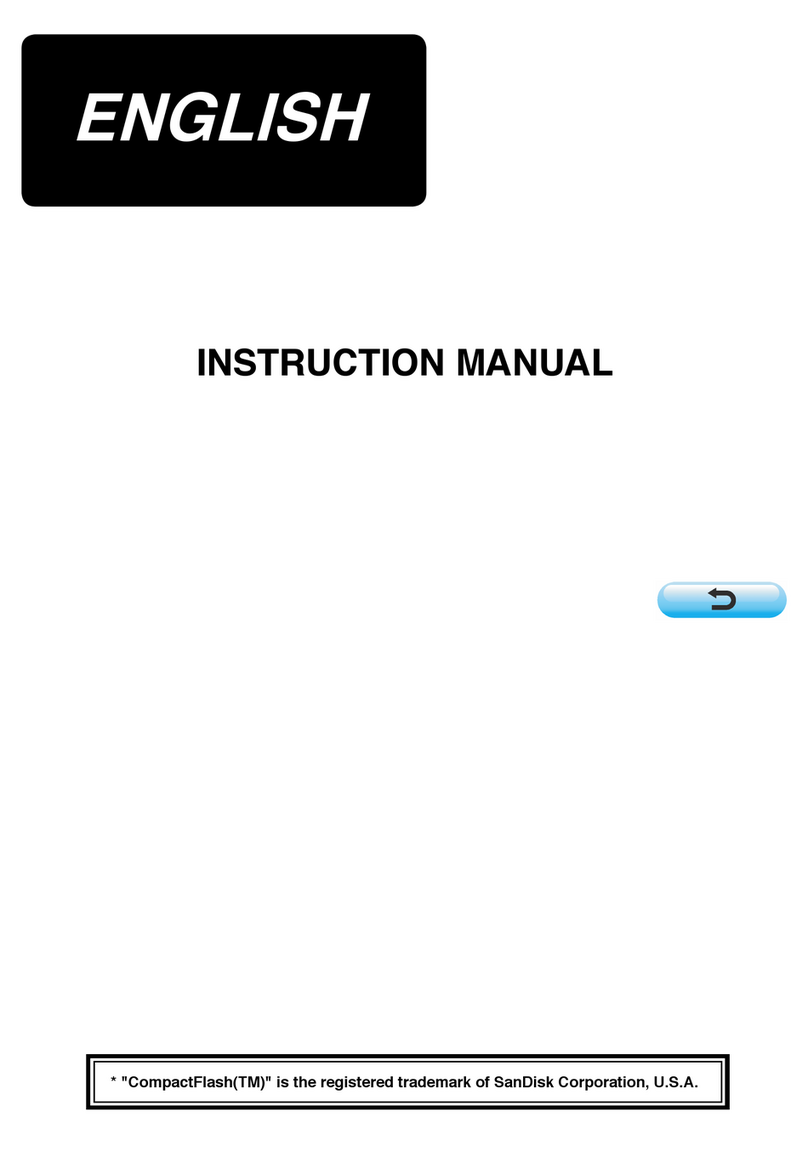
– 1 –
1. Overview of the sewing machine
The top & bottom feed, lockstitch machine with high and long arm and an automatic thread trimmer
has adopted the long-nose design to provide a wider space under the arm for easier handling of the
material. It also has a longer needle stroke and the broader setting range of amount of the alternat-
ing vertical movement of the walking foot and presser foot. With these features, this model of sewing
machine demonstrates substantially improved sewing performance particularly when sewing heavy-
weight materials with thick threads.
The sewing machine comes with an automatic lubrication system, thereby achieving smooth feed of
material with reduced noise and vibration. It is especially suited to the sewing of car seats, tents, sofas,
heavy-weight materials such as leather products and canvass materials as well as belt-shaped products.
2. Specications
2-1. Specications
2-2. Operation environment for the electrical box
2-2-1. When using this product, install it away from equipment that generates high-
frequency electromagnetic waves and electrical waves in order to prevent
malfunctions caused when aected by those waves.
2-2-2. Temperature in the product operating environment
a: Use the product at such a place in which the room temperature is equal to or higher
than 5 °C and equal to or lower than 35 °C.
b: Do not operate the product at such a place that is exposed to the direct sunlight or
outdoors.
c: Do not operate the product near a heater (electric stove).
d: Carry out work at a relative humidity ranging from 35 % to 85 %.
e: Do not carry out work near combustible gas or explosive substances.
2-2-3. Rated voltage: AC220V-AC240V, 50/60Hz
2-2-4. Earth resistance of the system: 4 Ω or less
Motor output: 750W
Maximum sewing speed setting range: 100 to 2200 sti/min
Low sewing speed setting range: 80 to 400 sti/min
Speed regulating method: Stepless speed variation, automatic constant-speed operation
Number of input signals: 2 systems; compensation stitching switch, safety switch includ-
ing the manual BT switch
Number of output signals: 5 systems; solenoids of the thread trimmer, wiper, thread
clamp, reverse feed stitching device and presser foot lifter
Fault detection: Overcurrent, overheat, short-circuit, rotation fault
Time required to detect a rotation fault: 1.5 sec
Model DU-1481-7
Application Medium- to heavy-weight materials
Maximum sewing speed 2200 sti/min
Maximum stitch length 9 mm
Needle bar stroke 38 mm
Thread take-up lever stroke 138 mm
Amount of the alternating vertical movement of the walking
foot and presser foot 2.0 to 5.5 mm
Needle (standard) DP × 17, #23 (#18 to #23)
Lubricating oil JUKI MACHINE Oil (40226742)
Hook Lubrication of hook (thread trimming)
Lubricating method Automatic lubrication
Thread trimming device Provided
Reverse-feed sewing device Provided
Amount of lift of the presser foot Manual operation 6 mm
Knee-lifter 15 mm
